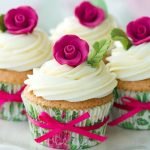Are you wondering how to make cake decorating icing? Icing plays a crucial role in cake decorating, as it provides the final touch that brings a cake to life. Whether you are a beginner or experienced baker, knowing how to make different types of icing can elevate your cake decorating skills and take your creations to the next level.
There are various types of cake decorating icing, each with its own unique characteristics and uses. From buttercream to royal icing to fondant, understanding the differences between these icings and how to make them will expand your repertoire as a decorator. In this article, we will explore the importance of icing in cake decorating and provide step-by-step instructions for making some popular types of icing.
When it comes to making your own cake decorating icing, having the right ingredients is key. From powdered sugar to butter to food coloring, understanding what goes into each type of icing is essential for achieving the perfect consistency and flavor. In the following sections, we will delve into the ingredients needed for creating different types of icing, as well as provide detailed instructions for making buttercream, royal icing, and fondant from scratch.
Types of Cake Decorating Icing
When it comes to cake decorating, the type of icing used can make a big difference in the final look and taste of the cake. There are several types of icing commonly used for cake decorating, each with its own unique qualities and uses. The most popular types of cake decorating icing include buttercream, royal icing, and fondant.
Buttercream icing is a versatile option that is made with butter or shortening, powdered sugar, and flavorings such as vanilla or almond extract. It is easy to work with and can be spread onto a cake with a spatula or piped into elaborate designs using a decorating bag and tips. Buttercream icing can also be easily colored to create vibrant designs and patterns on cakes.
Royal icing is a hard-drying icing that is often used for intricate designs on cakes, such as intricate piping work and delicate details. It is made from powdered sugar, egg whites or meringue powder, and flavorings such as lemon juice. Royal icing sets up firm, making it ideal for creating decorations that need to stand upright on a cake.
Fondant is a type of sugar paste that can be rolled out into thin sheets and draped over cakes for a smooth, polished finish. It can also be molded into 3D shapes or cut into intricate designs to create stunning cake decorations. Fondant has a smooth texture and can be flavored or colored as desired. It provides a clean canvas for adding intricate details to cakes.
With some practice and patience, you can learn how to make cake decorating frosting at home using simple ingredients like butter or shortening, powdered sugar, flavorings, meringue powder, egg whites lemon juice among others.
Ingredients Needed to Make Cake Decorating Icing
When it comes to cake decorating, choosing the right icing is crucial in bringing your design ideas to life. Whether you prefer the smooth texture of buttercream, the hard finish of royal icing, or the versatility of fondant, having the right ingredients at hand is essential for creating stunning cake decorations.
For making buttercream icing, you will need unsalted butter, confectioners’ sugar (also known as powdered sugar), pure vanilla extract, and heavy cream or milk. These simple ingredients come together to create a creamy and fluffy icing that is perfect for both filling and frosting cakes. Adding gel food coloring can also help you achieve vibrant hues for your cake designs.
Royal icing requires only three basic ingredients – egg whites or meringue powder, confectioners’ sugar, and water – making it a popular choice for creating intricate designs like lacework and delicate flowers. With the addition of food coloring gel, you can easily customize the color of your royal icing to suit the theme of your cake.
Lastly, for those who love working with fondant, the key ingredients include marshmallows, water, confectioners’ sugar, and shortening. This pliable and smooth icing allows for endless possibilities in terms of shaping and molding decorations for cakes.
It’s important to note that regardless of which type of icing you choose to make, using high-quality ingredients will contribute significantly to the taste and overall look of your finished cake. By using these ingredients skillfully with your own hands, anyone can whip up a delicious cake decorating icing at home.
Step-by-Step Instructions for Making Buttercream Icing
Buttercream icing is a classic and versatile option for cake decorating, loved for its creamy texture and sweet flavor. Making your own buttercream icing at home is simple and allows you to customize the flavor and color to suit your preferences. Here’s a step-by-step guide on how to make buttercream icing:
Ingredients needed:
- 1 cup unsalted butter, softened
- 4 cups confectioners’ sugar
- 2 teaspoons vanilla extract
- 2-3 tablespoons heavy cream or milk
Instructions:
- In a mixing bowl, beat the softened butter until creamy.
- Gradually add the confectioners’ sugar, one cup at a time, beating well after each addition.
- After all the sugar has been added, continue to beat the mixture until smooth and creamy.
- Add the vanilla extract and 2 tablespoons of heavy cream or milk. Beat on medium speed for another 3 minutes.
- If the buttercream is too thick, add an additional tablespoon of heavy cream or milk and beat until desired consistency is achieved.
Once your buttercream icing is ready, you can use it to frost cakes, pipe decorative borders, create intricate designs, or mix in food coloring for vibrant hues. The possibilities with buttercream icing are endless, making it a go-to choice for both beginner and experienced cake decorators. With this homemade icing, you can elevate the look and taste of your baked creations.
For those looking to venture into cake decorating or experiment with different types of icings in their baking projects, mastering the art of making buttercream icing is a great starting point. With just a few simple ingredients and steps, you can create a delectable and visually appealing topping for your favorite cakes and cupcakes.
Step-by-Step Instructions for Making Royal Icing
Royal icing is a versatile and popular choice for cake decorating due to its smooth finish and ability to harden quickly. Here’s how to make your own royal icing at home.
To make royal icing, you will need the following ingredients:
- 2 large egg whites
- 3 cups of confectioners’ sugar
- 1 teaspoon of vanilla extract
- Food coloring (optional)
Here are the step-by-step instructions for making royal icing:
- Start by ensuring that your mixing bowl and beaters are clean and grease-free, as any trace of grease can prevent the egg whites from stiffening.
- In the clean mixing bowl, beat the egg whites on high speed until they form stiff peaks.
- Gradually add the confectioners’ sugar to the beaten egg whites, continuing to beat on high speed until the mixture is thick and glossy.
- Add in the vanilla extract and mix until well combined.
- If desired, divide the royal icing into separate bowls and add food coloring to achieve your desired shades.
Once you have made your royal icing, it can be used immediately or stored in an airtight container at room temperature for up to two weeks. When using royal icing for decorating cakes or cookies, it’s important to cover any unused portion with plastic wrap directly touching the surface of the icing to prevent it from drying out.
For piped designs or intricate details on cakes or cookies, royal icing can be transferred into piping bags with small tips for precise application.
Making your own royal icing at home allows for customization in terms of color and consistency, making it a great choice for both beginner and experienced decorators looking to elevate their creations.
Step-by-Step Instructions for Making Fondant
Fondant is a versatile and popular choice for cake decorating icing. It can be shaped, rolled, and draped over cakes to create a smooth and professional finish. Making your own fondant at home is easier than you might think, and allows for complete customization in terms of flavor and color. Here are the step-by-step instructions for making fondant:
- Start by gathering the necessary ingredients: gelatin, water, corn syrup, glycerin, flavoring extract, confectioners’ sugar, and shortening.
- In a microwave-safe bowl, combine gelatin and cold water. Let it stand until thick.
- Microwave the mixture for 30 seconds or until the gelatin is dissolved.
- Add the corn syrup, glycerin and flavoring extract to the gelatin mixture.
- Place confectioners’ sugar in a large bowl and make a well in the center. Pour the liquid mixture into the well and stir with a wooden spoon until it becomes too stiff to stir.
- Add more sugar to make a dough-like consistency. Knead fondant on a clean surface dusted with confectioners’ sugar until smooth.
By following these simple steps, you can easily create your own fondant at home for all your cake decorating needs.
Once you have made your fondant, you can use it to cover cakes or create intricate decorations. It’s important to remember that handling fondant requires practice and patience. Start with simple designs before moving on to more complex techniques such as creating figurines or elaborate patterns.
Overall, making your own fondant from scratch not only allows for more creativity but also ensures that you are using fresh ingredients without any added preservatives or artificial flavors. With practice and experimentation with different flavorings and colors, you can elevate your cake decorating skills to new heights.
Tips and Tricks for Decorating With Icing
When it comes to cake decorating, mastering different piping techniques and color mixing can elevate the look of your creations. Whether you’re a beginner or an experienced baker, learning how to use icing effectively can take your cakes from ordinary to extraordinary. In this section, we will explore some essential tips and tricks for decorating with icing that will help you achieve professional-looking decorations.
Piping Techniques
One of the most important skills in cake decorating is mastering different piping techniques. Piping allows you to create intricate designs, borders, and writing on your cakes.
To start, make sure your icing is at the right consistency for piping – it should be firm enough to hold its shape but not too stiff that it’s difficult to squeeze out of the piping bag. Practice piping basic shapes such as dots, lines, swirls, and rosettes on a piece of parchment paper before attempting to pipe directly onto your cake.
Color Mixing
Creating custom colors for your icing can add a unique touch to your cake decorations. Start by using gel food coloring as opposed to liquid food coloring, as gel colors are more concentrated and won’t affect the consistency of your icing. To achieve pastel shades, start with a small amount of color and gradually add more until you reach the desired hue.
For darker shades, you may need to let the colored icing sit for a few hours to fully develop the color. Remember that colors tend to intensify over time so start with less than you think you need.
Other Decorating Tricks
In addition to piping techniques and color mixing, there are other decorating tricks that can elevate your cakes. Using stencils can add intricate patterns without needing advanced piping skills. Sprinkling edible glitter or dragees onto your icing can add a touch of sparkle and elegance to your creations. Experimenting with different nozzle tips for your piping bag can also lead to new design possibilities.
By mastering these tips and tricks for decorating with icing, you’ll be able to create stunning cake decorations that will impress friends and family. Don’t be afraid to experiment and try out new techniques – after all, practice makes perfect.
Design Ideas
When it comes to cake decorating, the type of icing you use can greatly impact the overall design and look of your cake. Each type of icing has its own unique characteristics and is best suited for different decorating techniques.
Buttercream icing, for example, is perfect for creating smooth finishes and intricate designs, while royal icing is great for making delicate decorations that harden as they dry. Fondant, on the other hand, is ideal for creating a sleek, polished look and can be molded into various shapes and designs.
One popular design idea for cake decorations is using a combination of different types of icing to create a multi-dimensional effect. For example, you could use buttercream icing to create a textured base layer on the cake, then add accents with royal icing such as delicate flowers or intricate lace patterns. You can also use fondant to make larger decorative elements like bows or ribbons that really make the design pop.
Another design idea is using different colors and shades of icing to create depth and dimension in your cake decorations. With buttercream icing, you can easily mix in food coloring to achieve custom shades and hues. Royal icing can be piped in different colors to create vibrant designs and patterns while fondant can be tinted with gel food colors or painted with edible food paint for a beautifully customized look.
In addition to using multiple types and colors of icing, incorporating various piping techniques can further enhance your cake decorations. Techniques such as piping rosettes, swirls, ruffles, or even writing with icing can add an extra level of detail and creativity to your designs. By mastering these techniques and getting creative with your color choices and combinations, you can truly elevate your cake decorating skills and create stunning works of edible art.
| Design Idea | Description |
|---|---|
| Using multiple types of icing | Create a multi-dimensional effect by combining buttercream, royal icing, and fondant for different decorative elements. |
| Color mixing | Use various colors of buttercream, royal icing, or fondant to add depth and dimension to your designs. |
| Piping techniques | Incorporate piping techniques such as rosettes, swirls, ruffles or writing with icing for added detail. |
Conclusion
In conclusion, the art of cake decorating is truly incomplete without the perfect icing to tie it all together. Whether you are a beginner or an experienced baker, mastering the art of making your own cake decorating icing can elevate your baked creations to a whole new level.
The versatility and creativity that come with different types of icing such as buttercream, royal icing, and fondant allow for endless design possibilities and personalization when it comes to decorating cakes for any occasion.
By learning how to make cake decorating icing at home, you have the power to customize flavors, colors, and textures to suit your specific preferences or the theme of your event. By using high-quality ingredients and following precise measurements and techniques, you can achieve professional-looking results right in your own kitchen.
Not only does making your own icing offer a sense of accomplishment and creativity, but it also allows you to have full control over what goes into your edible artwork.
So why not take the plunge and explore the world of cake decorating with homemade icing? With the step-by-step instructions provided in this article for making buttercream, royal icing, and fondant, along with tips on piping techniques and color mixing, you have all the tools you need to get started.
Remember that practice makes perfect and don’t be afraid to experiment with different designs and flavors. The possibilities are truly endless when it comes to creating beautiful cake decorations with homemade icing.
Frequently Asked Questions
What Kind of Icing Do You Use for Cake Decorating?
The kind of icing used for cake decorating depends on personal preference and the desired finish. Buttercream is popular for its creamy taste and smooth texture, while fondant offers a sleek, polished look.
How to Make the Perfect Cake Icing?
To make the perfect cake icing, start with room temperature ingredients to ensure smooth blending. Cream butter and sugar together until light and fluffy, then add flavorings and coloring gradually. Adjust consistency as needed.
What Are the Ingredients for Decorating a Cake?
The ingredients for decorating a cake vary depending on the chosen icing or frosting. Common components include butter or shortening, powdered sugar, flavorings like vanilla or almond extract, milk or cream, and food coloring if desired. For fondant decorations, marshmallows and confectioners’ sugar are key components.

Welcome to our cake decorating blog! My name is Destiny Flores, and I am the proud owner of a cake decorating business named Cake Karma. Our mission is to provide delicious, beautiful cakes for all occasions. We specialize in creating custom cakes that are tailored specifically to each customer’s individual needs and tastes.





